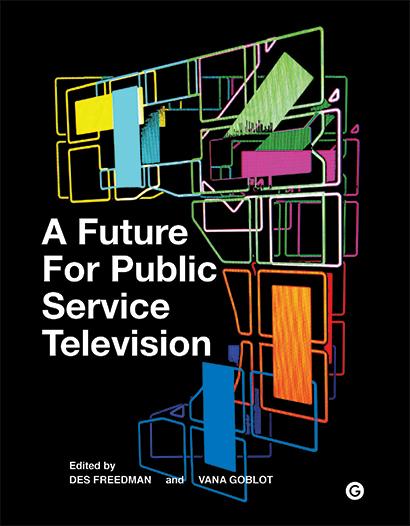Traditional broadcasting features in VoD services
REPORT
The reappropriation of time in television: How traditional qualities of broadcast media are being adopted by their video-on-demand services
Julie Münter Lassen l Nordicom
2023
In an increasingly digital media landscape, traditional broadcasters adapt their services to suit the new habits of their audience, who are spending more and more time using digital platforms. But how does it affect the presentation and the scheduling of programmes? Are old broadcasting theories such as immediacy, being live, being daily, and providing event television compatible with the new on-demand services offered by more public broadcasters today?
This study takes a look at these different questions through two different models of Danish Video on-demand services, DRTV and TV2 Play and demonstrates how features of traditional linear television are still key characteristics of SVoD services in Denmark.
Nordic countries' digital strategies and third-party platforms
JOURNAL
Digital strategies and third-party platforms: How Nordic public service media are reframing their audio strategies for the future
Aura Lindeberg | Journal of Digital Media & Policy
2023
This paper indicates the relationship between broadcasters and third-party platforms. The research examined four public service media organisations in Finland, Sweden, Denmark and Norway who expressed their doubts regarding the distribution of their content on third party platforms. According to this study, PSMs’ ties with third-party platforms have gotten more complex , calling into question PSM’s value of universalism and the study also argues that national media policies are unable to regulate international audio distribution.
Integrating Ethnic Content into Public Service Broadcasting
REPORT
Integrating Ethnic Content into Public Service Broadcasting
Centre for Law and Democracy
2023
When working towards a democracy, it is important that ethnic content can be integrated into public service broadcasting (PSB). This Note looks at how this can be achieved. In democracies, the overall regulatory system for broadcasting has tools and mechanisms to help aid and encourage broadcasting material and content that is a rough representation of the population. Broadcasters also take measures to ensure they serve the needs and interests of all members in society. This Note looks at ways to promote ethnic voices in PSB.
Covid-TV: Routes to Content during Covid-19
POLICY BRIEF
Covid-TV
Routes to Content during Covid-19
University of Huddersfield | Prof. Catherine Johnson
Published: 2020
What does the impact of Covid-19 on TV viewing tell us about the future of public service broadcasting (PSB) in the UK?
A Future for Public Service Television
Book
A Future for Public Service Television
Edited by Des Freedman and Vana Galdot
Television is on the verge of both decline and rebirth. Vast technological change has brought about financial uncertainty as well as new creative possibilities for producers, distributors and viewers. This volume examines not only the unexpected resilience of TV as cultural pastime and aesthetic practice but also the prospects for public service television in a digital, multichannel ecology.
 The proliferation of platforms from Amazon and Netflix to YouTube and the vlogosphere means intense competition for audiences traditionally dominated by legacy broadcasters. Public service broadcasters – whether the BBC, the German ARD, or the Canadian Broadcasting Corporation – are particularly vulnerable to this volatility. Born in the more stable political and cultural conditions of the twentieth century, they face a range of pressures on their revenue, their remits and indeed their very futures. This book reflects on the issues raised in Lord Puttnam’s 2016 Public Service TV Inquiry Report, with contributions from leading broadcasters, academics and regulators. With resonance for students, professionals and consumers with a stake in British media, it serves both as historical record and as a look at the future of television in an on-demand age.
The proliferation of platforms from Amazon and Netflix to YouTube and the vlogosphere means intense competition for audiences traditionally dominated by legacy broadcasters. Public service broadcasters – whether the BBC, the German ARD, or the Canadian Broadcasting Corporation – are particularly vulnerable to this volatility. Born in the more stable political and cultural conditions of the twentieth century, they face a range of pressures on their revenue, their remits and indeed their very futures. This book reflects on the issues raised in Lord Puttnam’s 2016 Public Service TV Inquiry Report, with contributions from leading broadcasters, academics and regulators. With resonance for students, professionals and consumers with a stake in British media, it serves both as historical record and as a look at the future of television in an on-demand age.
Contributors include
Tess Alps, Patrick Barwise, James Bennett, Georgina Born, Natasha Cox, Gunn Enli, Des Freedman, Vana Goblot, David Hendy, Jennifer Holt, Amanda D. Lotz, Sarita Malik, Matthew Powers, Lord Puttnam, Trine Syvertsen, Jon Thoday, Mark Thompson
About the Editors
Des Freedman is Professor of Media and Communications at Goldsmiths, University of London. He is project lead for the Inquiry into the Future of Public Service Television.
Vana Goblot teaches media and communications at Goldsmiths, University of London and is a research associate on the Inquiry. Her PhD examined questions of quality, cultural value and archival processes in relation to BBC4.
